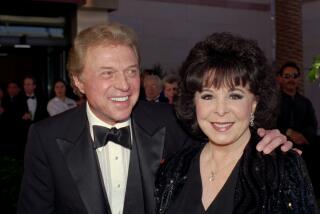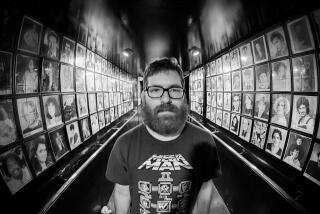Black Youth’s ’93 Slaying Lays Bare Race Tensions in Britain
- Share via
LONDON — Stephen Lawrence and a friend, both black and 18, were waiting for a bus home in a rough part of southeast London on the night of April 22, 1993, when a group of white youths attacked them, punching, kicking and yelling racial epithets.
Passersby remember a scuffle. The white youths ran one way. The victims tried to run the other. But Lawrence was bleeding too heavily to go far. He died, of two stab wounds, before an ambulance arrived.
In the five years since, Lawrence has become the most famous black murder victim in British history.
His death has exposed the persistent racial tensions of a society that likes to think of itself as cheerfully multiethnic. It has also exposed the inadequacy of the overwhelmingly white police in investigating such crimes.
The dogged quest of Lawrence’s parents to speed up a sluggish police investigation and bring to trial the five white men who are the chief suspects has drawn support from South African President Nelson Mandela, black activist groups and, increasingly, the general public.
The five suspects were arrested weeks after the killing when Lawrence’s parents complained that the police were doing little to investigate aggression against blacks. But Neil Acourt, his brother Jamie Acourt, David Norris, Gary Dobson and Luke Knight, all now in their 20s, are free again today.
The original police case was twice dismissed for lack of evidence. In 1995, the Lawrences began their own “private prosecution,” a rare procedure in Britain. Again, a judge ruled that the evidence was inadequate. Because of double jeopardy, the suspects cannot be tried again for the crime.
The police have now apologized to Lawrence’s parents for mishandling the case. And this week, the five men were forced to testify about where they were on the night of Lawrence’s death. Their testimony came during a public inquiry into where the police went wrong in the case; the men’s guilt or innocence cannot legally be discussed.
Feelings are running high over the case. After Jamie Acourt arrived to testify Monday, a dozen members of the Nation of Islam activist group, in dark suits and red bow ties, invaded the inquiry room. Outside, it was pandemonium, with police firing tear gas at angry demonstrators.
On Tuesday, more protesters outside the courtroom hurled bottles and eggs at the police and yelled, “Racists!” and “You protect murderers!”
The shocking details of the case began seeping into public consciousness last year, when the Daily Mail tabloid newspaper published photographs of the five men, with their crew cuts and dark glasses, and a detailed expose under this screaming banner headline: “Murderers.” The five did nothing to defend themselves until this week, when they issued a statement saying they were innocent.
Evidence now under discussion includes a police surveillance video of the five, made covertly at the apartment they used as a base at the end of 1994. It showed them using racist language and talking about shooting black people, skinning them and setting them alight. It never appeared in court.
The Lawrences’ lawyer, Michael Mansfield, has argued that the tapes revealed a group of extreme racists obsessed with knives. The five deny that they are racist.
Brian Cathcart, an investigative journalist covering the case, said he believes that the failures of policing on display at the inquiry are at last making Britain examine its collective conscience.
“In many ways, police failures reflect the wider failures of the population they serve,” he said. “If we took race crime more seriously, then the police would.”
More to Read
Sign up for Essential California
The most important California stories and recommendations in your inbox every morning.
You may occasionally receive promotional content from the Los Angeles Times.













